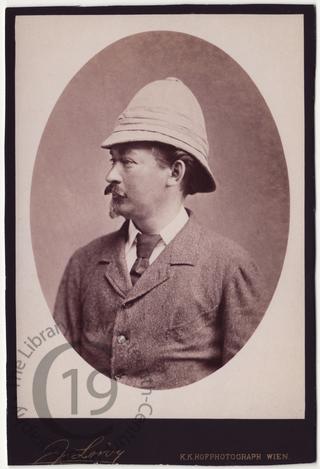
Emil Holub
The Czech physician, explorer, cartographer and ethnographer Emil Holub (1847-1902) was inspired to visit Africa by the diaries of David Livingstone. He travelled to Cape Town in South Africa shortly after graduating from Prague University as a doctor of medicine. He eventually settled near Kimberley to practise medicine but after eight months he set out in a convoy of local hunters on a two-month experimental expedition, or ‘scientific safari’, during which he began to assemble a large natural history collection.
In 1873 Holub embarked on his second scientific safari, devoting his attention to the collection of ethnographic material. On his third expedition in 1875, he ventured all the way to the Zambezi river and made the first detailed map of the region surrounding Victoria Falls.
After returning to Prague for several years, Holub made plans for a bold African expedition. In 1883, along with his new wife and six guides, he set out to do what no one had done before: explore the entire length of Africa from Cape Town all the way to Egypt. However, the expedition was troubled by illness and the uncooperative Ila tribesmen and Holub and his team were forced to turn back in 1886.
Holub later mounted two highly successful exhibitions, in Vienna in 1891 and in Prague in 1892. Frustrated that he was unable to find a permanent home for his large collection of artefacts, he gradually sold or gave away parts of it to museums, scientific institutions and schools.
Later Holub published a series of documents, contributing to papers and magazines, and delivering lectures. His early death came in Vienna on 21 February 1902, caused by lingering complications of malaria and other diseases he had acquired while in Africa.
Photographed by J. Lowy of Vienna.
Code: 122333




